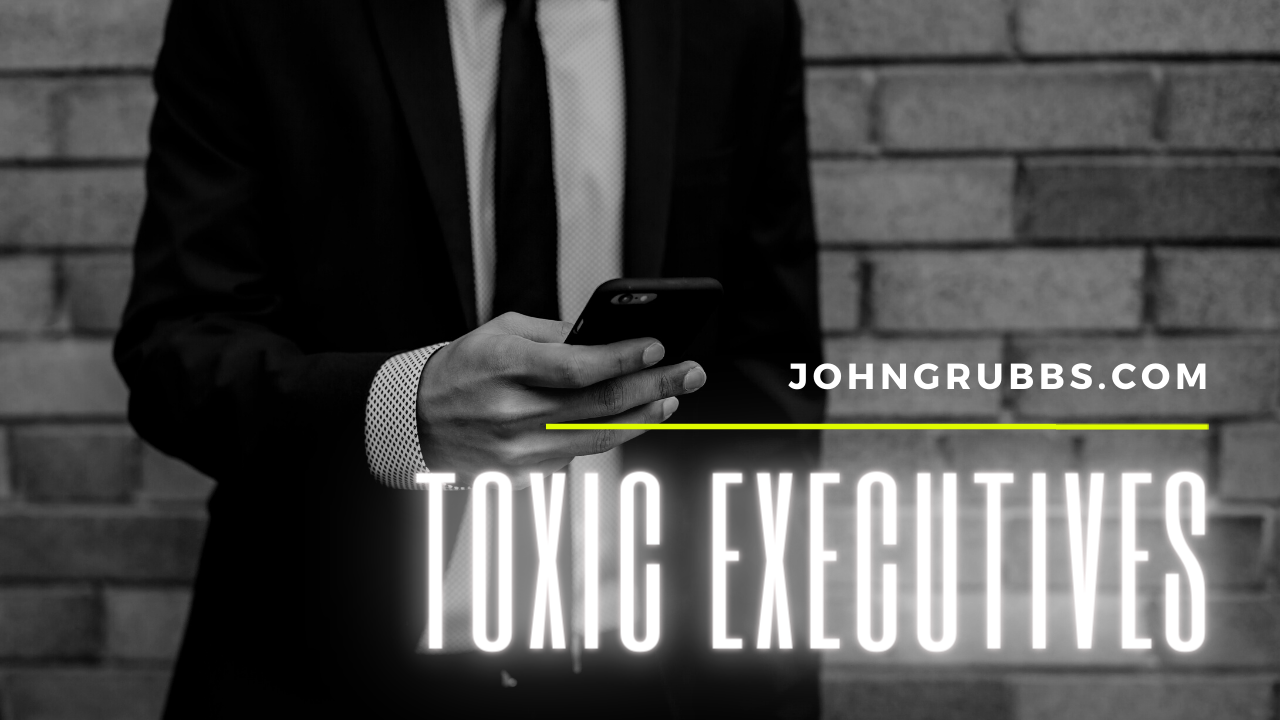Dehire Toxic Executives
11/01/2021
We have all hired that person that looked good on paper and interviewed well but did not turn out as expected. How do we undo this mistake? You went to the board and made the pitch, but alas, they did not perform. Or worse, they have changed into someone that is no longer the person you hired. What now? I have coached several top-level executives through the challenge of undoing the mistake they made with a bad hire. It is never easy; however, it requires a willingness to place the organization's good over any one individual.
According to the Harvard Business Review, "Senior Executives have the power to create an environment that allows people to grow and give their best – or a toxic workplace where everyone is unhappy." The article states that the mental health of the executive plays a significant role in how they use the newly gained executive power. Specifically, the report says: "Sound, stable bosses generally build companies where the rules make sense to employees, freeing them to focus on performing their jobs well. But if the boss's psychological makeup gets warped, business plans, ideas, interactions, and even the systems and structure of the organization itself will reflect their pathologies." Of course, psychoanalysis is not plausible at the time of hire; however, when these pathologies manifest themselves in executives, you must take action for the organization's good. The following five reasons make taking action sooner rather than later critical:
- Morale equals productivity. It isn't easy to quantify the relationship between production and employee morale. However, most people agree that a happy and engaged workforce will be more productive than an unhappy team that has mentally disengaged from work. Poor morale can be devastating when organizations face market challenges that are external to the organization.
- Top performers go silent and disengage. Studies suggest that seventy percent of management employees disengage at work. The remaining thirty percent are those that make things happen. They close deals, meet production demands, and solve the never-ending flow of challenges that appear regularly. When these thirty percent of the team disengage, the organization is approaching disaster. Critical problems go unreported and get missed at the developing stage. They grow into large wildfires that the organization must fight.
- Top talent disappears. Under the leadership of toxic executives, key players get forced to make a decision. Stay and remain disengaged or leave for new opportunities. With today's mobile workforce and the great resignation, talent is difficult to retain talent in the best of organizations. Key players have options. They probably have offers they have not taken in the past. A toxic environment makes it easy to revisit these opportunities.
- Toxic executives have a history. Because of today's litigious reality, hiring professionals have difficulty determining a candidate's actual past. Post-termination policies limit what the former company can say during past employment verifications. It is easy to be seduced by a powerful resume that does not reflect reality. Most job interviews are superficial and do not dig into the candidate's past relationship with the people they led. And frankly, previous employers may be excited that the toxic executive is moving on and no longer infecting their own culture.
- Toxic executives are pathological. The most common form of executive toxicity is narcissism. We all have narcissistic tendencies; however, when these get amplified, they become a problem. So how do you spot a narcissist? Following are some clues to determine a toxic level of narcissism. They live in a binary world that is only one way or another and usually their way or no way at all. They do not utilize the input of subordinates when making decisions. Coworkers are either "in the circle" or "out of the circle of trust." These executives see themselves as the "Messiah" who is omnipotent with solutions. They also place the appearance of reality over solving problems. In other words, they are more concerned with how a situation will reflect upon themselves rather than finding a solution. This reality is easy to spot while coaching these executives because they reveal it readily when under stress. "How will it look to our customers, the board, or my boss?" is a common first reaction to a challenging situation.
The human reality is more similar than dissimilar. We are more alike than we like to admit; however, toxic executives seem to be an exaggeration of the challenges we all face that have become amplified by power. Generations of humans have formed our instincts as a critical indicator of success and survival. If you think you have a problem employee on the team, you more than likely do. If you feel like you might need to make a people decision, you probably do. We cannot act on instincts alone. It is equally important to perform due diligence when helping a manager or executive navigate the dangerous waters of terminating the toxic executive. If done correctly, the rewards are immediate. It feels like a weight gets lifted, or the storm has passed, and the sun shines brightly again. Toxic employees are like a disease that needs to spread to survive. If not treated early, these harmful tumors can metastasize and kill your organization. The most challenging part of being a truly effective leader is making difficult decisions based on imperfect information. You know in your gut what you must do; dehire them and let them infect your competitors!
